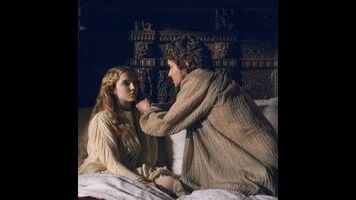Philippa Gregory has created her own cottage industry of lightly fictionalized historical novels about English history, beginning with The Other Boleyn Girl. Since then, she has expanded into several volumes about the Tudors and their predecessors and various wives. The hit Starz series The White Queen combined three of Gregory’s books to tell the story of Elizabeth Woodville, wife of Edward IV; Anne Neville, wife of Richard III; and Margaret Beaufort, mother of Henry VII, all vying for power in the midst of the War Of The Roses.
It takes a while to sort out upon viewing: Lacking those helpful family tree charts at the start of Gregory’s books, viewers may find themselves scouring Wikipedia pages about some of these historic characters. There they may discover that many of them had tragic ends, though historically minded Anglophiles have to be used to that. But some of these stories from the 15th century are difficult to witness, like commoners falling dead from plague or a young would-be heir locked up in the Tower Of London. Luckily, these dark scenes are balanced by the gorgeous scenery, costume design, and set pieces. Like its predecessor, The White Princess boasts the production values of a BBC series, effortlessly transporting the viewer to a world of centuries ago, where the dank, gray castle rooms are not as luxurious as one would imagine, and intimate bedchambers are worlds apart from opulent public spaces.
In a TV season that’s already been uncommonly strong for female-focused drama (Big Little Lies, Feud), The White Princess offers a chance to see just how much women pulled 15th-century monarchy strings. All of Gregory’s works are told from women’s point of view, which has made her a huge hit in the romance novel set. The male characters here are merely figureheads, though Jacob Collins-Levy’s Henry VII is dishy, of course, making his love scenes with Princess Elizabeth irresistible territory for fans of bodice-rippers. Jodie Comer, who plays the white princess of the title, shows uncommon depth, much more so than she did as the woebegone post-adolescent in Thirteen. Michelle Fairley, previously terrifying as a maternal villain in 24: Live Another Day, is downright chilling as the cruel and calculating Margaret, who cares for little else other than the rise of the Tudors; any feelings of sympathy or compassion just get in her way, so she denies them completely. Essie Davis’ Dowager Queen Elizabeth is just as scheming, especially against her new son-in-law, but her fruitless ambitions seem more tragic, as even the faintest of English history fans know that nothing can or will stop the Tudors. But of all the female leads, perhaps none is more formidable than Joanne Whalley’s Duchess Of Burgundy, whose region has become a sanctuary for those fleeing the Tudors.
There’s a temptation to yoke everything with the Trump presidency nowadays, but that analogy truly comes into play here: an unexpected, unfamiliar leader who won after defeating the favorite and now has to preside over an extremely divided country, with half a population dead-set against him. Because leadership is a concept we’re currently grappling with, it’s interesting to see just how much Henry desires the love of his public and how difficult it is to get it. His mother is undoubtedly the Steve Bannon figure, encouraging rule by domination and fear, which, unsurprisingly, doesn’t work. Fortunately, his new wife understands that helping the kingdom’s families ravished by a plague will be much more effective than shutting them out. A cinematic battle scene with Henry atop a hill watching the brutal hand-to-hand combat his army is enduring seems only too spot-on, similar to a group of army generals watching a raid from the Situation Room.
Gregory’s works always cross an uneasy line between truth and fiction: Her version of Anne Boleyn in the Other Boleyn Girl, for example, was called out by historians as much harsher than the actual Anne. True to form, The White Princess frequently features an end card that admits that some of the situations and characters have been tweaked for dramatic purposes. But the actual events of this story still have enough in play to make this a riveting watch—particularly, as with the previous series, how much these three women vie for power when the majority of women at that time had little say whatsoever. The other York princesses, for example, Elizabeth’s sisters and cousin, are quickly married off to get them out of the palace, their matchups literally plotted out with chess pieces on a game board. So The White Princess fortunately brings with it admiration for Dowager Elizabeth’s frantic efforts, Princess Elizabeth’s fervent hope for the future, and even Margaret’s ruthless steps, in a time when a woman’s only chance for power was to be born into it.

